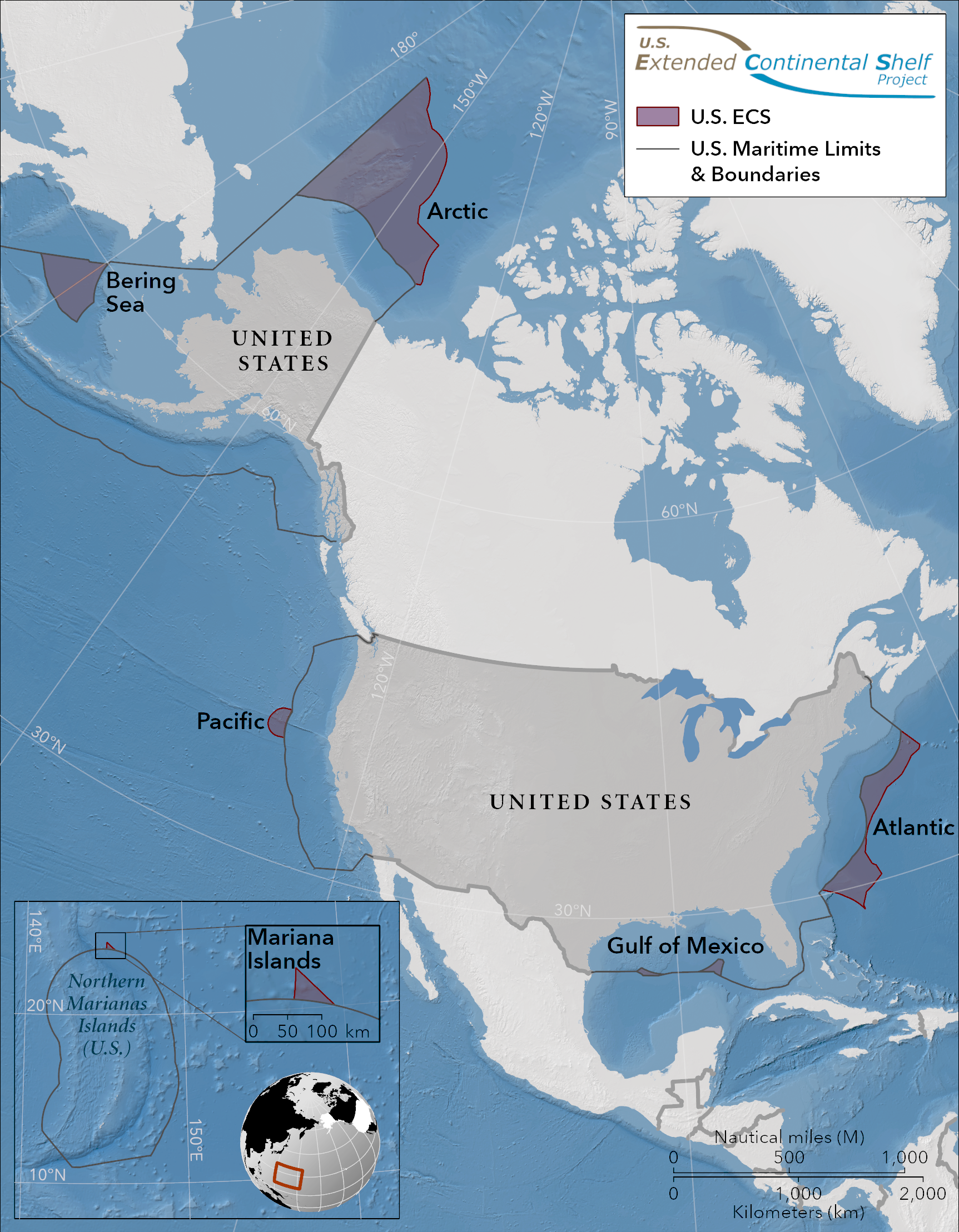Right at the end of last year, the United States suddenly grew in size by 1 million square kilometers (more than 386,000 square miles) – that’s almost twice the area of Spain. This unexpected expansion was not the result of strange geological forces, nor the invasion of a foreign land, but the US attempting to lay claim to its surrounding ocean-floor territory.
Continental shelves are areas of seabed that surround large landmasses where the sea is relatively shallow compared with the open ocean. Under international law, countries can claim these continental shelves, allowing them to manage and exploit their resources.
As many as 75 countries have defined their Extended Continental Shelf (ECS) limits, which refers to the portion of the continental shelf beyond 200 nautical miles (230 miles) from the coast. Until last year, the US had not done this.
On December 19, 2023, the US State Department announced new geographic coordinates defining what they claim to be their ECS area.
Since 2003, US authorities have been collaborating with the NOAA, the US Geological Survey, and 12 other agencies to gather geological data to define the outer limits of their ECS.
In light of this work, the US now claims ECS in seven offshore areas: the Arctic, Atlantic (east coast), Bering Sea, Pacific (west coast), Mariana Islands, and two areas in the Gulf of Mexico. In total, this is an area that’s 1 million square kilometers (more than 386,000 square miles) in size.
“America is larger than it was yesterday,” Mead Treadwell, a former Alaska lieutenant governor and former chair of the US Arctic Research Commission, said on December 19, per Alaska Public Media.
A map showing the US Extended Continental Shelf (ECS).
Image credit: US State Department
“It’s not quite the Louisiana Purchase. It’s not quite the purchase of Alaska, but the new area of land and subsurface resources under the land controlled by the United States is two Californias larger,” he added.
The legality of all this is a bit hazy, Treadwell explains in a post for the Wilson Center. To make the definition official, the US has to submit data and reports to the United Nations Convention on Law of the Sea (UNCLOS). However, the US has not ratified UNCLOS due to complex political disagreements (the agreement has been ratified by 168 states and the European Union).
This leaves some uncertainty around how the proposition will be accepted under international law.
“If somebody came back and said, ‘Your science is bad,’ I think the United States would listen,” Treadwell told the media. “But I don’t think science is bad. I think we’ve had very good science.”
Needless to say, claiming new maritime borders can prove controversial on the international stage. Some of the most significant geopolitical spats in recent times have involved China and its neighbors, like the Philippines and Vietnam, over claims to the South China Sea.
However, the US stands to gain a lot from its declaration. The expansion of ocean floor territory in the Arctic Ocean could open up the area for further mining, shipping, and fishing – despite the potential damage it could spark.
It also has implications for the nation’s security and its exercise of power in the world. As Sir Walter Raleigh wrote in the 17th century: “For whosoever commands the sea, commands the trade; whosoever commands the trade of the world, commands the riches of the world, and consequently the world itself.”
An earlier version of this article was published in January 2024.
Source Link: The United States Grew By 1 Million Square Kilometers In Size Last Year
